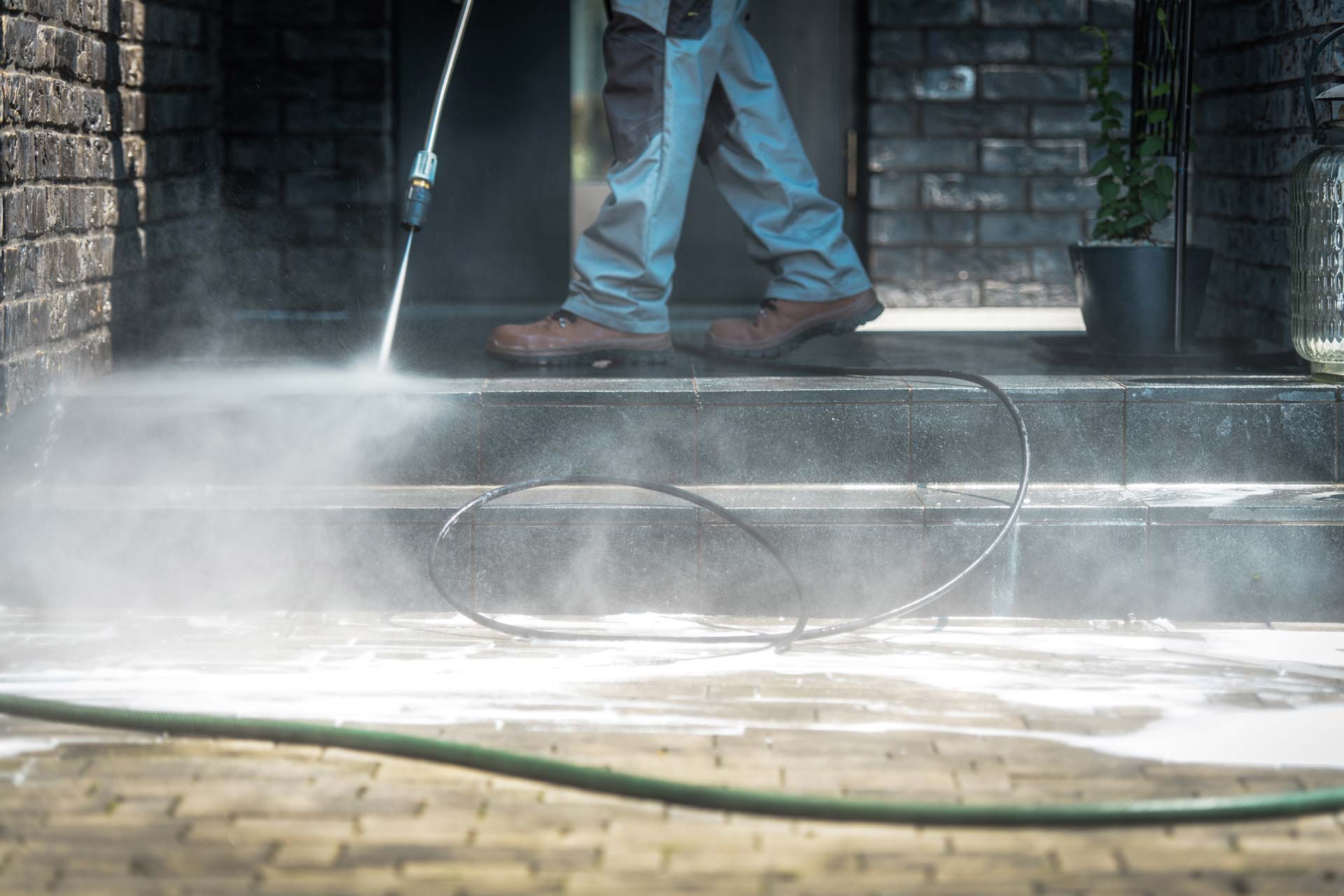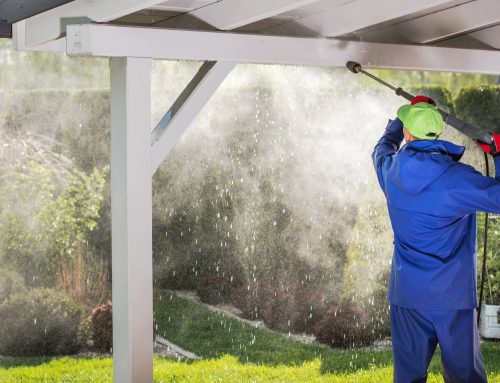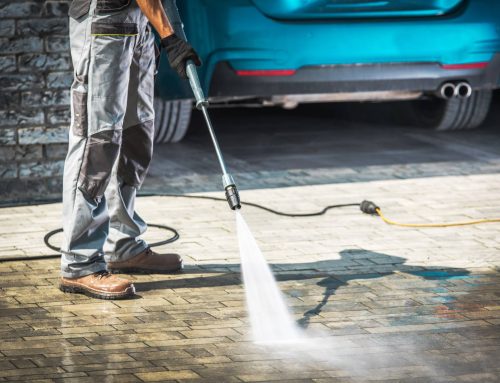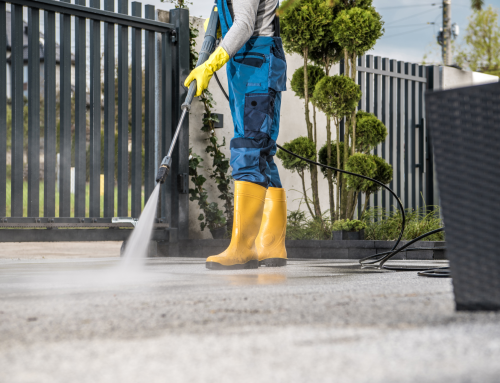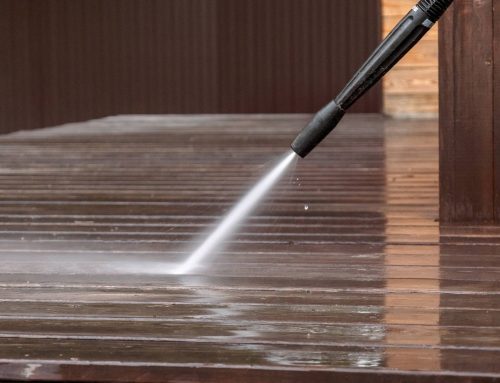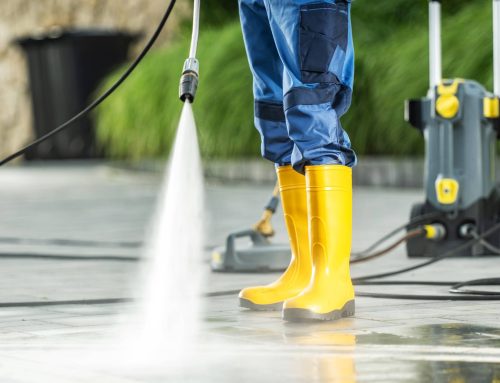Nothing beats a power washer’s high-pressured blast for removing stuck-on dirt, debris, moss, mold, and difficult-to-remove build-up. Power washing is a great tool for cleaning. However, not everything around the home is suitable for cleaning with a pressure washer on your own. Some outdoor surfaces require extra attention and should be cleaned by a professional to avoid any extra wear and tear on your surfaces. Check out our advice below to learn which surfaces may and should be cleaned with a pressure washer.
1. Deck
Power washing is safe for most hardwoods and pressure-treated timbers. To avoid leaving any markings, consult your power washer’s manual to see which setting is appropriate. Some softer woods may need the use of a low-pressure nozzle. Spray in the direction of the grain of the wood, not against it, for the best cleaning results. When it comes to power washing, it may be better to leave it to the professionals to avoid any damage to your deck.
In the case, you want to power wash your deck yourself, you first want to select a lower pressure that still allows for the most effectiveness. For cedar or pine, about 500 to 600 psi would be recommended, for harder woods, the max setting you should go to is 1200 psi. A nozzle fan tip with a 40 to 60-degree spread would be the best tip to use. Begin power washing the deck no closer than 6 inches or you could potentially damage the wood. Clean the deck with a sweeping motion and avoid the tendency to pivot with your arm, this will result in an inconsistent distance between the spray and the surface. Start from the house and outwards to the edges of your deck and work with the grain by feathering the spray lengthwise.
2. Driveway
A driveway may be ruined by oil stains, extra dirt, and embedded stains. Power washing is an excellent method for removing these unsightly stains and restoring the asphalt, concrete, or brick to its natural appearance. Power washing a driveway requires extreme caution because if you use the incorrect nozzle or spray too near, you risk degrading the surface and causing irreversible harm. As a result, you should only have a professional spray your driveway. It is also worth noting that if any portions of the driveway require repair, you should address them first before turning on the water. The high-pressure blast will further worsen the damage.
If you own and would like to power wash your driveway yourself you should first prepare the area by clearing any loose material like stone, dirt, and other debris with a leaf blower or broom. Remove any other objects from the driveway that could be potentially damaged by the power washer like bikes, potted plants, and outdoor furniture. When using detergent use the low-pressure nozzle and for rinsing use a high-pressure nozzle. If you have a brick surface do not use the high-pressure nozzle because it can damage that material. Always test your power washer on a small area before committing to the entire surface to ensure the pressure will not damage it. Start at the higher end of the drive and work your way down it in the direction of the water flow. Once you have applied detergent to the entire surface, let it stand for 15 minutes or so. You may need to rewet it occasionally to make sure that it does not dry out. After 15 minutes, switch to a high-pressure nozzle and set the pressure washer to its rinse mode. Fully rinse the driveway from any detergent or leftover loose grime and allow the area to dry.
3. Walkways
Power washing moldy, dusty, and dirty pavers may revitalize your walkway. With the appropriate method and minimal pressure, brick and concrete may be swiftly recovered. Some materials can endure high pressure, but not all. Spraying brick too aggressively, for example, might produce unpleasant streaks. In addition, power washing can leave grooves in laminar sandstone because it is too soft. It is recommended that, before you begin, always explore the optimum settings for the sort of pathway or patio materials, proper tools and procedures for power washing any surface is vital in a successful cleaning project.
Regardless of the material of the walkway, always start with a low-pressure nozzle to avoid any damage to the surface, and if needed change nozzles if the surface does not come clean after a few passes and if that surface allows you to do so. Direct the spray of water at an angle to the walkway and away from yourself. It is recommended to use a cleaning solution and brush once a month to remove and kill any algae buildup on your pathways.
4. Vinyl Siding
Vinyl siding, fiber cement siding, and wood are all quite durable and can withstand power washing. Aluminum siding, on the other hand, will dent if washed on a high setting. Use the lowest setting possible with a wide nozzle to avoid any damage. It is also vital to remember not to spray any stained surfaces or wood that has been covered with lead-based paints if you have wood siding. When washed, lead may readily chip off and settle in the soil if power washed.
The siding of your home may have a build-up of dirt and grime because it may not be cleaned as often as your deck or driveway. It would be recommended to use a pressure washer detergent first to break apart the tough dirt that may have accumulated over time on your siding. Apply the soap mixture under low pressure with smooth overlapping strokes. To prevent streaking, start from the bottom and work your way up. In the case that you have to reach the second story of your home, do not use the pressure washer while on a ladder because the power may force you to lose your balance. Instead use an extension kit that can reach the higher areas. Let the detergent settle for 10 minutes but do not let it dry. Begin rinsing your siding with a higher pressure nozzle and keep the wand at an angle pointing down to avoid any pressure shooting in between the siding fixtures.

